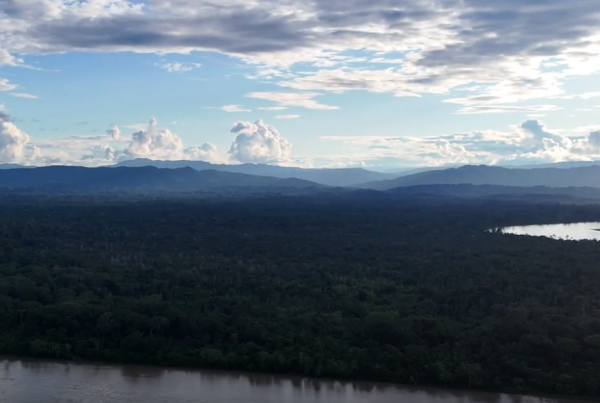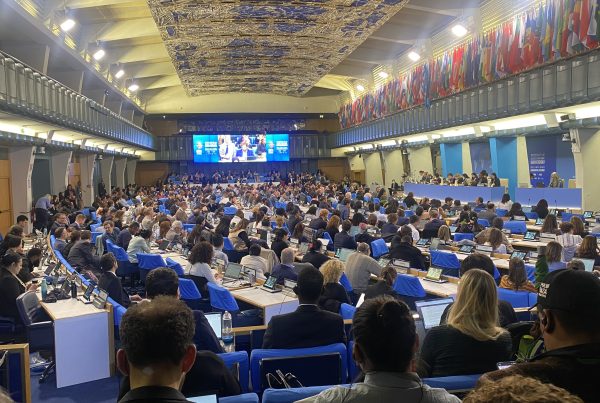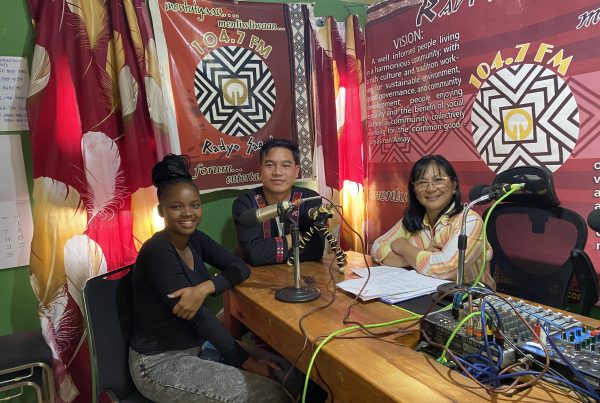World first for Conservation Journal, Oryx, as Indigenous-authored special edition launches
The May edition of Oryx, The International Journal of Conservation, sheds light on the critical role of Indigenous Peoples and Local Communities in global efforts to sustainably use and conserve biodiversity. In a first for the journal, each article has been co-authored by Indigenous researchers involved in the sites they describe, providing an opportunity to see the importance of indigenous knowledge and action in delivering site-based conservation.
Amplifying indigenous voices is a crucial part of ensuring that conservation policy recognises and respects the rights and essential contributions of those who live in and manage these highly-biodiverse areas. The special edition also reflects on the potential for conservation projects that do not listen to these voices to undermine or harm traditional practices.
“We do not conserve. It is our way of life that conserves.” – Peter Kitelo (CIPDP), Ogiek leader and co-author of an Oryx article outlining how securing the community tenure rights of forest peoples can create a rapid, rights-based route to the effective and sustainable conservation of their forests.
Other case studies in this edition of Oryx explore how the often-hidden perspectives and worldviews of Indigenous Peoples and Local Communities can be uncovered, through participatory mapping, food security plans and more.
An international precedent for the role of indigenous peoples in conservation
One of the papers in the new edition highlights the work of the Indigenous Ogiek people of the Mau forest in Kenya. The Mau Ogiek in Kenya recently won a historic case to reclaim their ancestral land in the Mau Forest, setting an international precedent for the role of Indigenous communities in conservation. The Mau Ogiek have been fighting for years to reclaim their land, which was taken from them during British colonial rule and later seized by the Kenyan government.
The African Court on Human and Peoples Rights ruled that the Kenyan government had violated the Ogiek peoples’ rights. They ordered the government to recognize the Ogiek peoples’ land rights and to compensate them for the damages they had suffered.
The Ogiek people’s victory has important implications for the recognition of the role of Indigenous communities in conservation by the Kenyan state. It challenges the dominant narrative in Kenya that Indigenous Peoples are a threat to conservation and shows that their traditional knowledge and sustainable way of life can contribute to biodiversity conservation. Moreover, it highlights the importance of recognizing Indigenous peoples’ land rights as a key strategy for achieving conservation.
Indigenous peoples and local communities often conserve biodiversity much more effectively than others
Research has shown that Indigenous Peoples and Local Communities can and often do play a critical role in conserving biodiversity, and that their territories contain high levels of biodiversity. However, many Indigenous peoples are facing threats to their land rights, including land grabbing and forced evictions, for development projects, extractive industries or even for conservation initiatives.
“As Indigenous Peoples, we have been custodians of our lands, territories and waters for millennia and have deep interaction with the ecosystems where we live. Evidence shows our lands are among the most biodiverse on the planet,” said Lakpa Nuri Sherpa, Indigenous leader from Nepal.
For example, a recent IPBES sustainability report released in 2022, found that policies supporting secure tenure rights for indigenous peoples, and equitable access to land, fisheries and forests, as well as poverty alleviation, create enabling conditions for sustainable use of wild species.
Effective global biodiversity and conservation policy requires a human rights-based approach
The importance of the contributions and leadership of indigenous peoples and local communities in achieving biodiversity goals was also emphasized by Lucy Mulenkei, an Indigenous leader from Kenya, ahead of the adoption of the Kunming-Montreal Global Biodiversity Framework by the Convention on Biological Diversity in December 2022.
“A human rights-based approach is crucial to a successful Global Biodiversity Framework,” said Lucy Mulenkei. “Recognition and respect of the rights of the communities is crucial.”
“Such an approach would mean that biodiversity policies, governance and management do not violate human rights, and those implementing such policies should actively seek ways to support and promote human rights in their design and implementation,” she said.
Ensuring global biodiversity commitments are upheld requires the input of Indigenous Peoples and Local Communities
Some commitments of the Global Biodiversity Framework, finalised in December 2022, are overwhelmingly positive.
The Framework acknowledges the critical role of Indigenous Peoples and local communities as custodians of biodiversity and partners in the conservation, restoration, and sustainable use of natural resources. The agreement also explicitly recognizes the contributions that these communities have made and continue to make to sustainable development, as well as the need to safeguard their rights, including their traditional knowledge associated with biodiversity.
However, the final agreement has weaknesses, including a lack of mandatory regulation of businesses and the promotion of «innovative financing solutions» without clarity about what these might be. What is clear is that conservationists need to work alongside Indigenous Peoples and local communities, reform national laws and policies, provide support, and sustain political will to achieve the ambition of the Global Framework, it cannot be achieved without them.
Ultimately, the voices, rights, contributions, and leadership of Indigenous Peoples and Local Communities must be increasingly centred and uplifted throughout the conservation sector to achieve sustainable use and conservation of biodiversity, and this new edition of Oryx further highlights key examples of this from around the world.
Type: Type
Region: Global
Theme: Community-led conservation; International Processes; Land and resource rights; Sustainable Livelihoods; Traditional and local knowledge
Partner: Forest Peoples Programme (FPP); University of Oxford’s Interdisciplinary Centre for Conservation Science (ICCS); Chepkitale Indigenous People Development Project (CIPDP)



